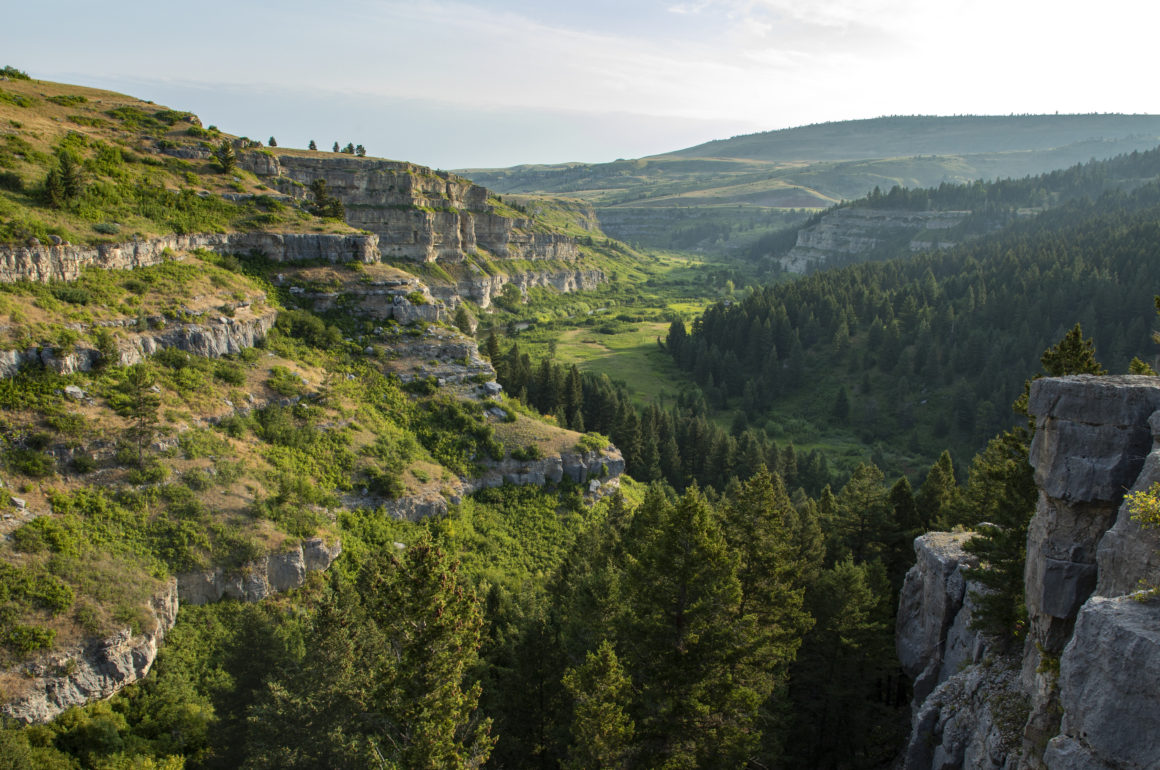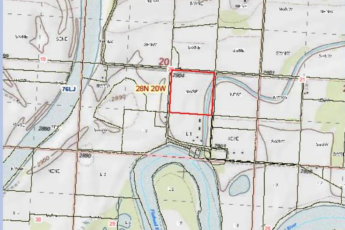
But the pressure is on.
Summer means exploring our state, and at Prairie Populist we’re joining the thousands of Montanans visiting the amazing lands, lakes, and historical sites that make up Montana’s state parks. We hope you’ll check back all summer and join us as we explore what these parks mean for the people of our state and how they help make Montana a place unlike any other.
If there’s one thing I have heard from Montanans across the state this summer, it’s that we all have our “special places.” You know, that secret fishing hole, campground, powder stash, berry patch, or place where a gut feeling tells you: “Yes, this is where I am going to find a trophy elk this fall.”
For many folks around Great Falls, who don’t have the same easy access to public lands as those in Bozeman, Helena, or Missoula, a large splotch of green known as the Little Belt Mountains is that spot. Easily accessible via the highway 89 corridor, the area offers ample opportunities for solitude and uncrowded trails. Yet as Montanans’ love for outdoor recreation continues to expand, how much longer will these rather undiscovered “special places” remain special before they become too popular?
For the folks of Central Montana, the Sluice Boxes State Park is one of those special places that is beginning to feel this pressure.
Just 40 miles south of Great Falls, the Sluice Boxes State Park brings a primitive backcountry experience to Montana’s State Park system compared to the more developed state parks, such as Giant Springs or First Peoples Buffalo Jump.
Sluice Boxes runs six miles north-to-south along Belt Creek. At spring runoff, the creek offers a one-of-a-kind float through what feels like a miniaturized Grand Canyon. But for most of the summer, it is the place to be for off-duty military personnel, families, and teens who satisfy their adrenaline fix with the calculated art of cliff jumping.
“I bet about 70 percent of the people down there are military,” said Dru Fream, who managed to get away from his post as a police officer at Malmstrom Air Force Base in Great Falls to spend the afternoon enjoying the park with friends. Here, they can let loose and immerse themselves in the outdoors.
“It’s a good place to fish, hike, and swim,” he said, before we flung our bodies off a 20-foot cliff and into the deep section of an eddy.
Like much of the surrounding area, mining spurred development in and around Sluice Boxes Park. An ample supply of lead, gold, and silver prompted small towns to pop up throughout these mountains. Trains transported the ore back to Great Falls for processing via the Montana Central Railroad. The rail line ended in Neihart, making the town the front lines of a mining operation that provided zinc and other metals until the end of World War II.
Today, the old railroad bed leads hikers above the canyons of the Sluice Boxes through such remote places it is hard to imagine a heavy, ore-laden train passing through. The rail bed, remains of old bridges, and scrap metal scattered throughout the park are the tell-tale signs of the canyon’s former days. These weathered structures draw visitors from all over Montana to enjoy a day’s worth of hiking and sightseeing.
“People in those towns are very outdoor-oriented people, the secret of this place is already out,” said the park’s manager, Colin Maas, referring to some of Montana’s more outdoor-oriented cities.
Maas points to social media as a prime culprit as he recalls recently watching three guys cliff jump while a fourth used his phone to capture their antics for Instagram. “Social media,” he said, “is one of the biggest factors that plays into rising visitation.”
Yet, for places like Neihart and Monarch, more visitors seems to be exactly what these small town economies need. Here, too, social media plays a role. Into the Little Belts is a locally led effort aimed at sharing the history of the Little Belts and surrounding area with out-of-towners. The project aims to bring a more sustainable tourism economy to the Highway 89 corridor without over popularizing the place. This is a fine line to straddle. Ally and Charley Willett, who head the web-based project, are working to strike a balance between keeping their special places secret and sharing them in a creative way that ensures others will find them special as well.
“(It) is like caring for the land as if it’s your own,” said Ally, “If you don’t manage your landscape, it might become unmanageable.”
One fear these folks have is that in 20 years, Neihart will join the ranks of other “fly-by” towns across the state. As of now, the Sluice Boxes doesn’t seem to be attracting tourism money to the 89 corridor, but as efforts like Into the Little Belts help spread the word, they may also help change that.
Sluice Boxes is to Great Falls what Hyalite Canyon is to Bozeman. It’s beautiful, rugged, accessible — and crowded. These crowds are beginning to stress the park scenery, stretching the capacity of Maas and his two part-time employees. Much of their time goes to cleaning up trash at the most popular cliff-jumping spots, which they refer to as, “party beaches one and two.” Staff also spend time maintaining trails and old bridges for the safety and enjoyment of the ever-increasing influx of hikers.
A part of the old rail bed that appears to have been literally eaten by erosion.
Some of the remaining historical bridges are falling apart, and can be dangerous for visitors.
“We try to educate to alleviate issues,” said Maas, in discussing visitor impact.
Maas recently added an informational kiosk complete with free trail maps and Leave No Trace™ ethics. On the trails, he has also placed signs that guide users across Belt Creek’s many crossing points.
While the maps make the park more accessible to families and groups that may find self-guided backcountry travel intimidating, they also help educate visitors about their impact on the land and what they can do to minimize that impact. Like the Willetts and Into the Little Belts, Maas is striking a balance between drawing more people to the park and ensuring that visitors understand their role in caring for this special place.
“Visitation has only increased over the years,” Maas said. “Funding and staffing has not. I anticipate more conflicts in the future.”
There is no stopping someone from visiting their special place — or sharing it with someone else. The need to explore areas like the Sluice Boxes are part of our shared identity as Montanans. Montana’s state parks play an important role in opening up public spaces and making them accessible for us all.
“I shouldn’t feel bad about that,” said Maas. “Making the park more accessible is my job.”
As park visitors, we share responsibility for keeping these places special.
Colin Maas stands at the confluence of Sheep Creek and the Smith River.
Story and Photographs by August Schield
Got something to say to Prairie Populist? Send news tips, story ideas and comments to [email protected]. If you have something to submit, or an idea for a story you’d like to write for us, check out our Submission Guidelines here.

